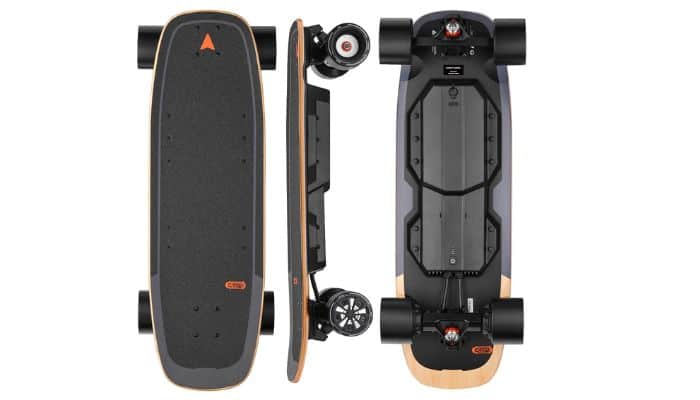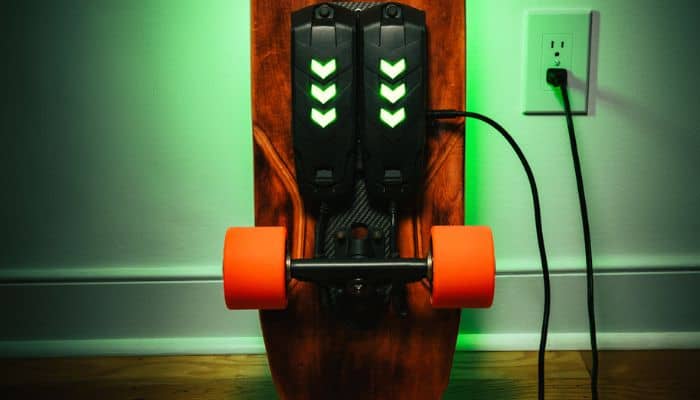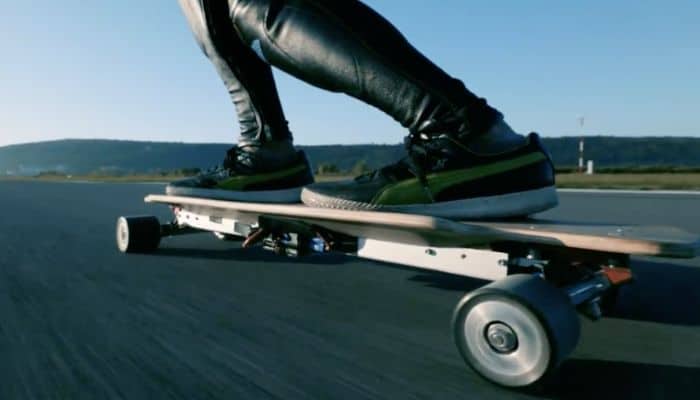Electric skateboards represent the fusion of technology with the classic thrill of skateboarding, offering an innovative mode of transportation and a new avenue for adventure. As these devices gain popularity among commuters, hobbyists, and thrill-seekers alike, it becomes essential to understand what electric skateboards are and the mechanics behind their operation. In part one of this series, we will delve into the fundamentals of electric skateboards, exploring their components, how they work, and the benefits they bring to the modern urban landscape.
Introduction to Electric Skateboards
Electric skateboards are motorized versions of traditional skateboards, equipped with an electric motor that propels the board forward without the need for manual pushing. These boards have revolutionized the concept of skateboarding, transforming it from a purely recreational activity into a viable and eco-friendly mode of urban transportation. Riders control the speed and braking through a handheld remote or, in more advanced models, through body movement or smartphone applications.
The Components of an Electric Skateboard
Understanding an electric skateboard starts with familiarizing oneself with its key components:
- Deck: The deck is the platform on which the rider stands. Electric skateboard decks are often made from the same materials as traditional skateboards, such as wood, bamboo, or composite materials, but they need to be sturdy enough to house the additional components like the battery and motor.
- Motor: The motor is the heart of the electric skateboard, providing the power needed to propel the board forward. There are two main types of motors used: hub motors, which are integrated into the wheels, and belt-drive motors, which are mounted on the board and transfer power to the wheels via a belt.
- Battery: The battery stores the electrical energy that powers the motor. The capacity and quality of the battery determine how far and how fast the skateboard can go on a single charge. Lithium-ion batteries are most commonly used due to their high energy density and long life span.
- Wheels: Electric skateboards use larger and softer wheels compared to traditional skateboards to provide a smoother ride over various terrains and to accommodate the motor apparatus.
- Electronic Speed Controller (ESC): The ESC is the brain of the electric skateboard, managing the speed of the motor based on input from the rider’s remote control. It regulates the power flow from the battery to the motor, allowing for smooth acceleration and deceleration.
- Remote Control: Most electric skateboards come with a handheld remote control that the rider uses to adjust speed and apply brakes. Some models offer additional features on the remote, such as battery life indicators and speed settings.
How Electric Skateboards Work
The operation of an electric skateboard is straightforward but relies on a complex interplay of its components. When the rider uses the remote to accelerate, the ESC draws power from the battery and directs it to the motor, which then turns the wheels and propels the board forward. Braking is achieved by reversing this process, where the motor slows down the wheels, and in some systems, kinetic energy from braking is converted back into electrical energy and fed into the battery.
One of the most innovative aspects of electric skateboarding is the ability to customize the riding experience. Riders can choose different speed settings, ranging from beginner to advanced, allowing for a tailored ride that can adapt to skill level and terrain. Additionally, the development of regenerative braking technology not only enhances the safety of the ride but also increases the efficiency and range of the skateboard by recovering energy that would otherwise be lost during deceleration.

Practical Applications of Electric Skateboards
Electric skateboards offer a unique combination of convenience, efficiency, and enjoyment, making them suitable for a variety of uses:
Commuting
One of the most compelling uses of electric skateboards is as a tool for commuting. Their compact size and ability to navigate through traffic make them an excellent option for urban commuters looking to avoid congestion and reduce travel time. Electric skateboards can easily integrate with public transportation systems, allowing for a seamless “last-mile” solution that bridges the gap between transit stops and the final destination.
Recreational Use
Beyond commuting, electric skateboards serve as a thrilling recreational activity. They provide a novel way to explore cityscapes, parks, and even off-road trails, depending on the model. For enthusiasts and hobbyists, electric skateboarding is a fun and challenging sport that combines the physical activity of traditional skateboarding with the excitement of motorized propulsion.
Eco-Friendly Transport
Electric skateboards also play a role in the larger context of sustainable transport solutions. By offering an alternative to gas-powered vehicles for short-distance travel, they contribute to reducing carbon emissions and traffic congestion. The electric nature of these skateboards means they are not only quieter but also cleaner, making them an environmentally conscious choice for getting around.
The Environmental Impact of Electric Skateboards
The rise of electric skateboards contributes positively to environmental conservation efforts by promoting cleaner, more sustainable modes of transportation. Compared to cars, electric skateboards require significantly less energy to operate and produce zero direct emissions. However, the environmental footprint of electric skateboards is not negligible, as it includes the impact of manufacturing, especially the production and disposal of lithium-ion batteries.
Sustainability Efforts
Manufacturers are increasingly aware of these environmental concerns and are taking steps to mitigate them. Efforts include using sustainable materials for the decks, developing more efficient and longer-lasting batteries, and implementing recycling programs for old boards and components. As the industry evolves, the focus on sustainability is expected to grow, further enhancing the eco-friendly credentials of electric skateboards.
The Future of Electric Skateboarding
The future of electric skateboarding looks promising, with technological advancements and societal shifts towards sustainable mobility driving its evolution. Here are a few trends shaping the future of electric skateboards:

Advances in Technology
Future electric skateboards are likely to feature improvements in battery technology, offering longer ranges and shorter charging times. Innovations in motor efficiency and materials science will make boards lighter, faster, and more durable. Additionally, smart connectivity features, such as GPS tracking and integration with mobile apps, will enhance the user experience by providing real-time data on performance, navigation, and board diagnostics.
Regulatory Environment
As electric skateboards become more prevalent, regulatory frameworks will need to adapt. This includes establishing clear rules regarding where electric skateboards can be used, speed limits, and safety requirements. A supportive regulatory environment is essential for the growth of electric skateboarding as a recognized mode of transportation.
Integration into Urban Mobility
Electric skateboards are set to become an integral part of the urban mobility landscape, complementing other forms of transportation such as bicycles, scooters, and public transit. City planners and policymakers are beginning to recognize the value of including electric skateboards in their mobility strategies, leading to the development of infrastructure and policies that support their use.
In conclusion, electric skateboards are more than just a modern convenience; they represent a significant step forward in the quest for sustainable urban mobility. By combining efficiency, eco-friendliness, and enjoyment, they offer a compelling alternative to traditional modes of transport. As technology advances and societal attitudes evolve, electric skateboards are poised to play a pivotal role in shaping the future of how we move through our cities and beyond.

